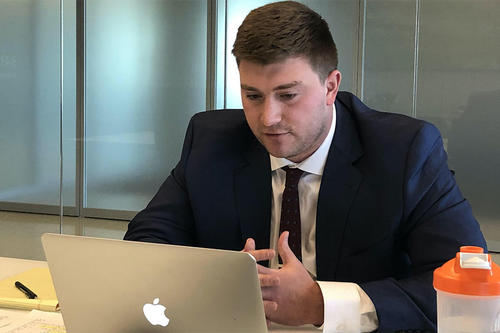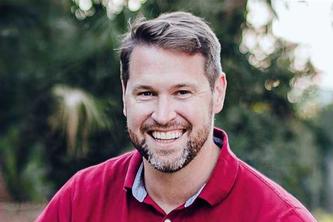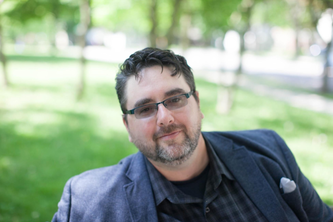
Connor Shaull ’20 began a new job at the Stinson law firm in Minneapolis on Jan. 11. Two days later, he was arguing a complex point of criminal procedure before the U.S. Court of Appeals for the 8th Circuit.
Working through the Law School’s Clemency Project, Shaull argued via Zoom (listen to audio) on behalf of Alicia Mofle, who in 2013 was sentenced to 14 years in federal prison for a low-level, non-violent role in a methamphetamine crime. The issue in the appeal was whether she gets a second chance for relief under a sentencing guideline that was made retroactive. Success would mean a sentencing reduction for Mofle of two and a half years, bringing the date of her release that much closer.
The Clemency Project was started seven years ago in response to President Barack Obama’s clemency initiative for non-violent and low-level federal inmates. Since its launch, it has morphed into a much larger initiative: seeking clemency for state prisoners in New York and Minnesota, as well as identifying and developing other novel “second look” opportunities for those serving disproportionately long prison sentences. The group has also sought compassionate release for federal prisoners on grounds of COVID-19 vulnerability.
In all, more than 50 students have worked on real-life cases under the tutelage of Professor JaneAnne Murray, founder and director of the project.
Shaull, who was just sworn into the Minnesota bar last fall, got the Mofle assignment as a student in the practicum Murray teaches as part of the Clemency Project.
“I usually offer a range of cases for students to work on,” says Murray. “A clemency application, a compassionate release motion, or, as in Mofle’s case, some other form of litigation that permits a ‘second look’ at their sentence. Connor expressed interest in Mofle’s appeal, and my attitude was, ‘…run with it.’”
Professor Randall Ryder, the Law School’s director of appellate advocacy, helped prepare Shaull for the 8th Circuit argument. Ryder had little doubt that he could handle it.
“I always wondered if he ever slept,” says Ryder of Shaull, who was also helping to raise his young children while attending law school.
“It wasn’t really that intimidating,” Shaull says of arguing his first federal appellate case. “The work of Professor Murray and the others had me feeling very prepared.”
Meanwhile, the new attorney is ready and eager to get up and running at Stinson.
“I’m a litigation associate,” he says. “Employment law is my top choice, but I’m open to anything.”
For his part, Shaull says he is grateful for the experience. “Like most Minnesota Law students, I was really eager to put my legal skills to practice. The clemency practicum was the perfect blend of legal writing and oral advocacy. I was thrilled to represent a real client while still in law school.”
-------
This story was adapted from the original, which can be viewed here.
- Categories:
- Law and Policy





